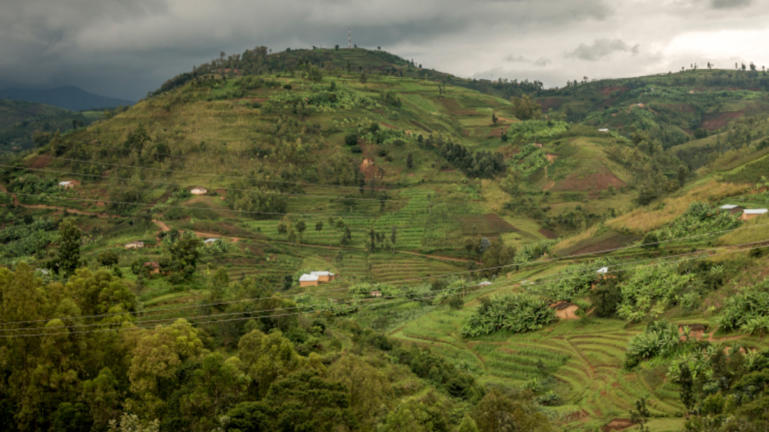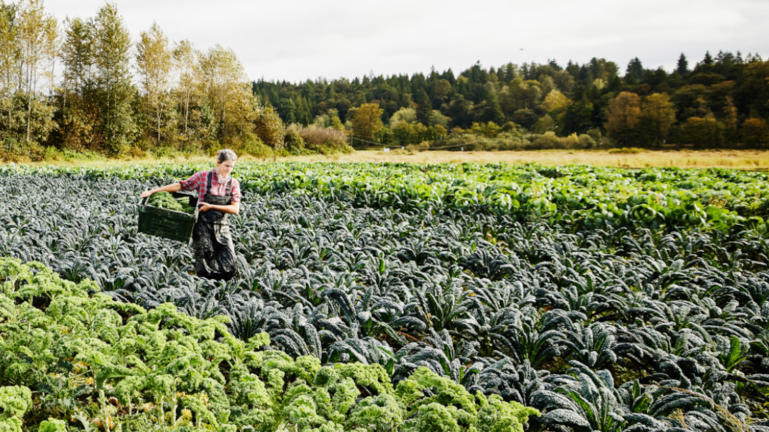Biodiversity in crisis
Animals and plants are disappearing at an alarming rate; in just two generations, monitored animal populations have more than halved. Biodiversity loss – such as drops in pollinator numbers or extirpation of keystone species – causes far-reaching damage. It can threaten food security; harm public health, and cost economies around $20tn per year.
While agriculture is one of the key drivers of biodiversity loss, it also holds the keys to a solution – if our production systems can shift to a nature-friendly approach.
As we also face the twin pressures of decarbonization and feeding a growing global population, it is critical to reconsider how arable land is used. Regenerative agriculture may be the most promising model for its future.
Enriching ecosystems
Regenerative agriculture goes beyond sustainability; it aims to enhance the farm ecosystem rather than exhaust it. It involves transforming agricultural land and practices to improve the health of farm ecosystems and the quality of yields.
The nature-based approach encompasses many practices, ranging from planting perennial crops to introducing livestock and forests to arable land. These practices aim to gradually increase organic matter in the soil, increase biodiversity, improve water flows, and enhance ecosystem services. Promoting soil fertility is at the core of regenerative agriculture. The WWF estimates that over the past 150 years half of the world’s nutrient-rich topsoil has been lost, but this can be turned around with regenerative practices.
For example, the structure of soil is eroded by frequent ploughing and tillage, rendering it inhospitable to microorganisms, so regenerative farming prioritises low- or no-trill practices. Soil can also be kept healthy through crop rotation (which nurtures a diversity of microorganisms to return different nutrients to the soil) and cover crops (which reduce erosion and nutrient loss, improve water retention, and disrupt pest and disease cycles).
These changes mean a thriving ecosystem and nutrient-rich crops, enabling farmers to reduce synthetic pesticide use and build resilience for future challenges, such as extreme weather associated with climate change.
No one-size-fits-all
Farmers will be the primary leaders and beneficiaries of the transition. Regenerative agriculture – which moves beyond a rigid focus on yields – puts the farmer and nature back at the centre of farming.
There is no one-size-fits-all approach to implementing this change from above. The most appropriate regenerative practices vary with factors such as local climate, crop needs, access to skills and equipment, and other resources. Indeed, research shows regenerative practices are more likely to be adopted when they address farmers’ specific needs and challenges. This means that farmers have a foundational role to play in identifying the best way to restore their ecosystem, diversity their products, and substitute external for internal resources. These practices place great emphasis on supporting the livelihood and emergence of a new generation of farmers.
The regenerative agriculture approach offers advantages beyond supporting farmers and biodiversity. Disturbance of soil through ploughing and tilling releases large quantities of carbon dioxide from the ground, so low- and no-till practices are great opportunities to retain and sequester carbon. For instance, France’s ‘4 per 1000’ initiative estimates a 0.4 per cent annual increase in the soil carbon pool could boost soil fertility while storing 1.2bn tonnes of carbon each year.
The World Economic Forum estimates that a transition to regenerative agricultural practices by 2030 may generate more than 60 million jobs and $1.1tn in economic opportunities. Companies could benefit from sustainable, diversified supply chains (increasingly important as investors pay close attention to climate-related business risks) and innovation driven by demand for precision farming tools. Regenerative farming also reduces risk and presents opportunities for complementary income (e.g.: carbon sequestration bonds) for farmers.
The path to regeneration
Regenerative agriculture pays, but farmers are forced to take on short-term financial burdens and support is scarce. Public bodies could expand support by ring-fencing agricultural subsidies, guaranteeing loans to finance sustainability measures, and offering financial incentives for sustainable practices such as carbon sequestration bonds.Consumer demand for the products of regenerative farming could also be encouraged through information campaigns and certification schemes.
Business itself has a huge role to play in driving the positive transformation of agriculture. OP2B is an organization that brings industry leaders together to support systemic change in farming to protect biodiversity. This can mean everything from a Nestlé project to source spices sustainably in India to McCain’s pilot farms in France and Belgium that are using crop rotation and cutting pesticide use to Danone’s soil health programme in the United States.
The overhaul of long-standing agricultural models will not happen spontaneously, but there is fertile ground for collaboration to build a more harmonious relationship between farming and nature.








